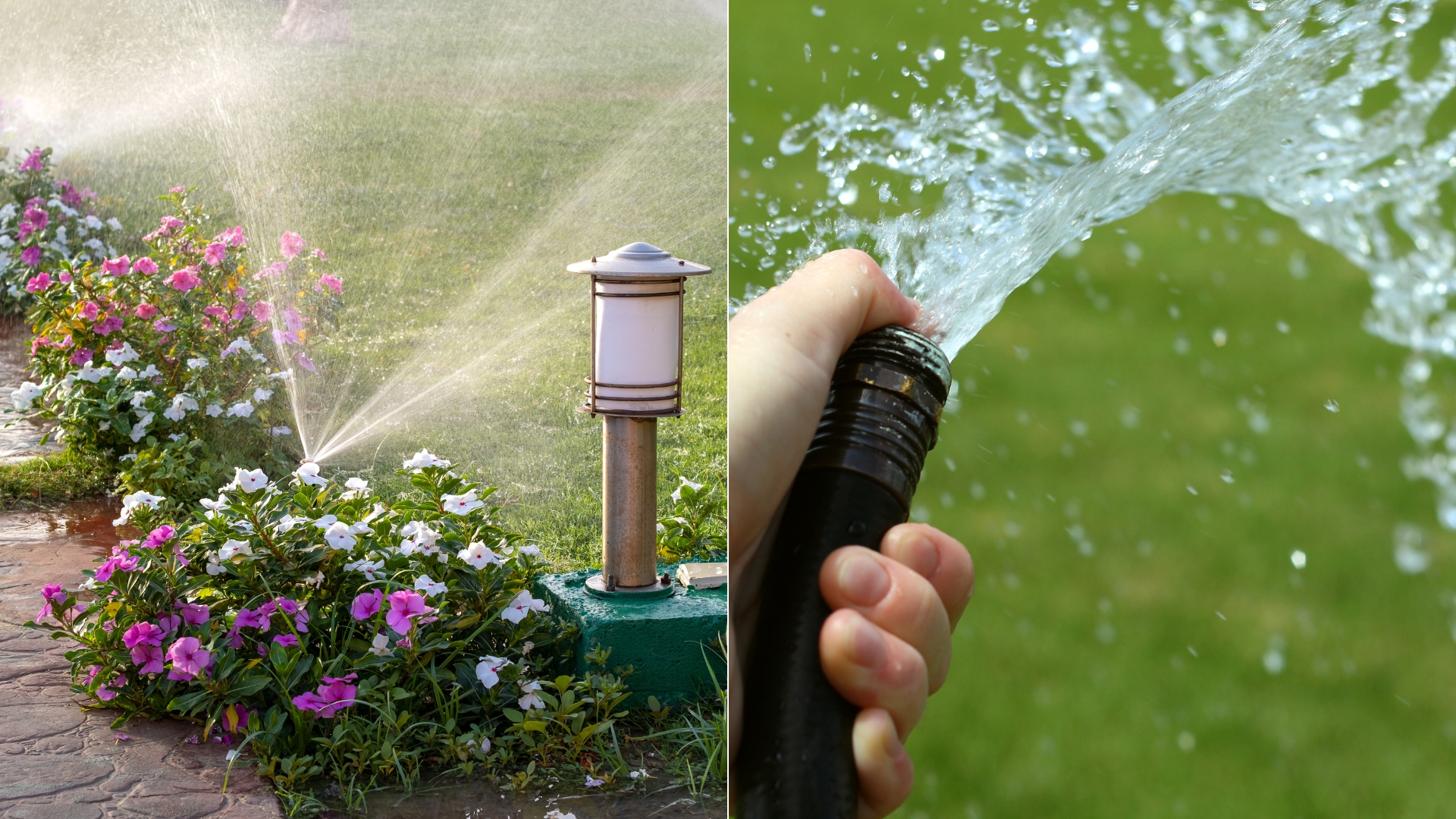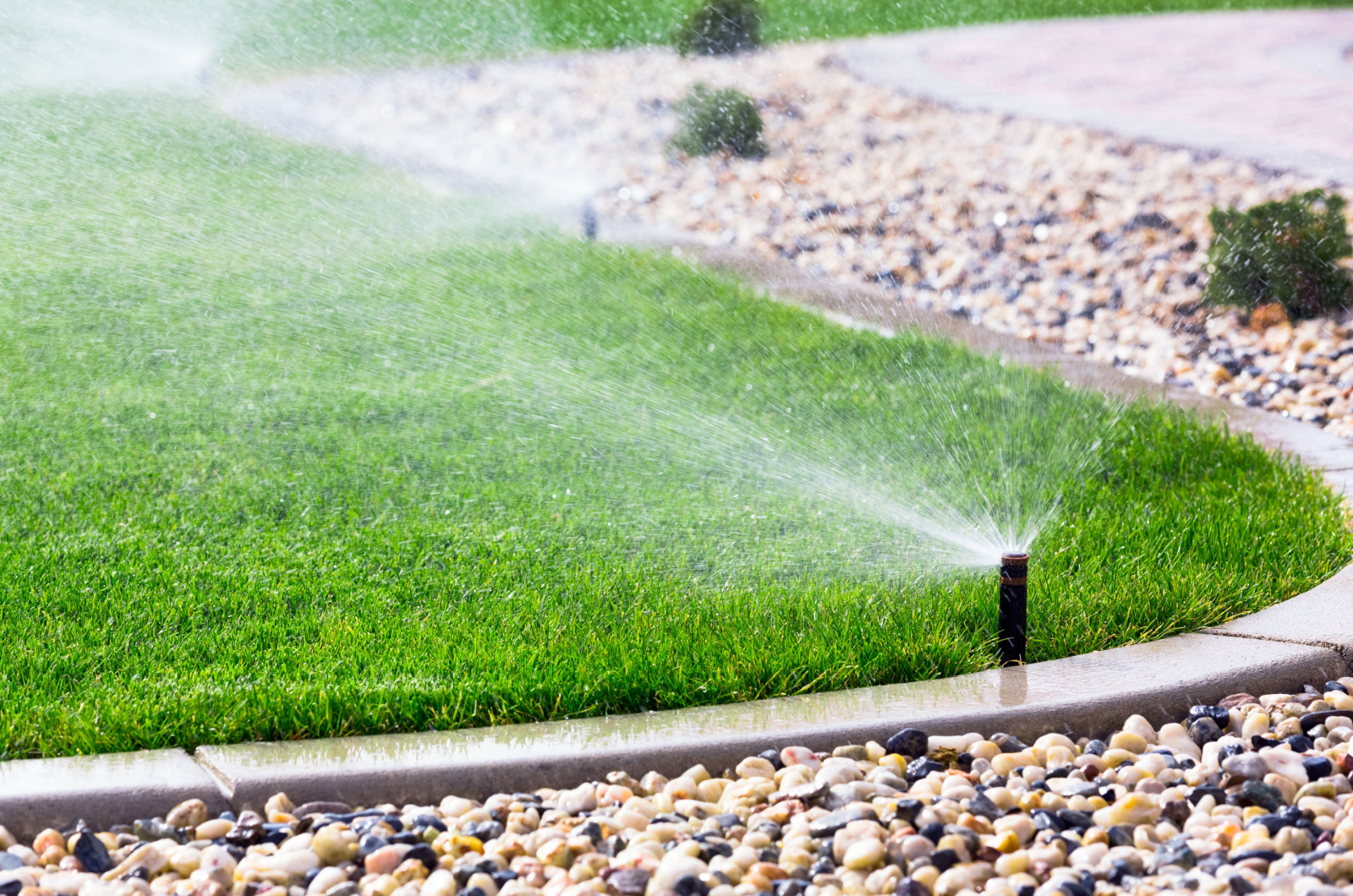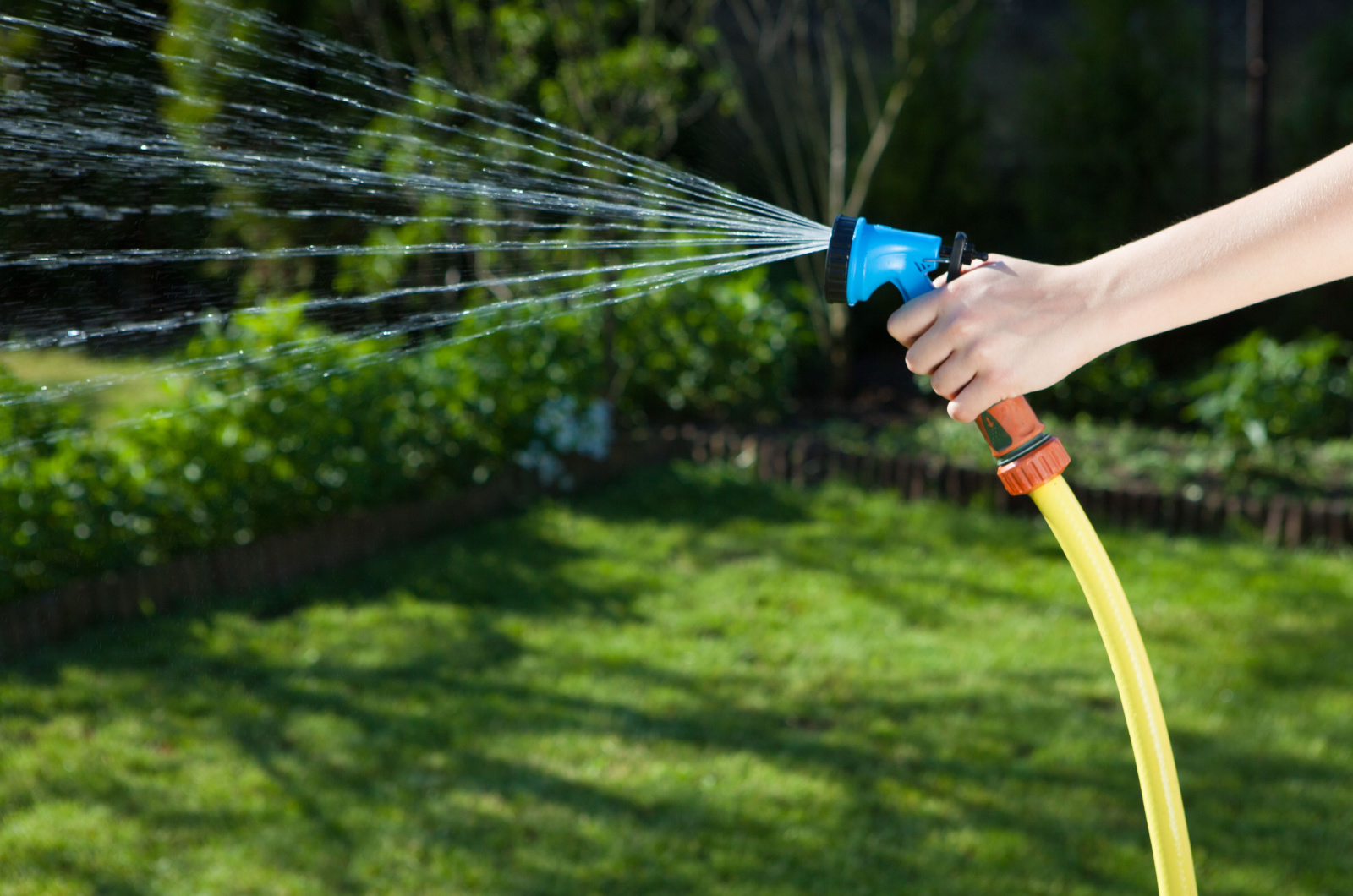Making sure your lawn is well watered is of the utmost importance, especially during hot summer days. But what is the best way to do so?
You can either opt for a sprinkler that is automatic and easily adjustable, or you can go for watering with a hose to water those taller plants in the garden as well.
Both options are good and effective, yet there are still some pros and cons to each. In this article, we are going to cover those advantages and disadvantages to help you decide between sprinkler and hose.
Let’s dive in!
Sprinkler Pros & Cons
We are starting with sprinklers. Some of the pros include adjusting according to the weather and setting up the best watering time, while poor coverage and high prices are a few of the cons. Let’s discuss this in a bit more detail.
Pro: Set Up The Best Watering Time
Sprinklers can be set on timers, allowing you to water your garden at the optimal time, even when you are not around. Watering at the right time will keep your lawn green and thick.
The best time to water your lawn is usually in the morning, before 10 am. So, if you are not a morning person, then setting up a sprinkler system is the ideal solution for you!
This will help to prevent overwatering during hot periods and ensure your plants get the right amount of water.
Also read: Here’s What Happens If You Water Your Lawn After Mowing
Pro: Automatic
Once set up, sprinklers operate automatically and do all of the hard work for you. All you have to do is set up the timer and go on about your day.
When watering with a hose, you will spend your precious time and energy getting every inch of your lawn and plants in the garden. With sprinklers, this is done quickly and efficiently!
Pro: Easily Adjustable
Many sprinklers come with adjustable spray patterns and water flow settings, allowing you to ensure that the watering suits different areas of your garden.
While sprinklers will consume more water, their systems allow you to set how long the watering will last with each session. This is very helpful when it comes to avoiding overwatering.
It’s amazing that nowadays you can control your sprinklers with your phone. Here’s an example of a smart sprinkler system: Rachio 16ZULW-C 16 Zone: 3rd Generation Smart Sprinkler Controller with Hyperlocal Weather Intelligence
Pro: Adjusting According To The Weather
Some advanced sprinklers have rain sensors or soil moisture sensors, which can adjust watering schedules based on the weather conditions. So, if there was plenty of rain, the sprinklers wouldn’t run unnecessarily.
However, in the peak of summer, they will automatically turn on to give your grass the moisture it needs. Thanks to soil moisture sensors, you won’t have to worry about overwatering either!
Con: High Price
One of the biggest drawbacks is the price – some of the best ones are quite expensive to install, so it might be a significant investment. In addition, sprinkler systems use up more water than hoses.
So, not only are you paying up to $1,000 to set it up, but you will also have a notably higher water bill later on.
Then there are the maintenance expenses to take into account. A broken sprinkler head that drips continuously is just as terrible as a leaky faucet and has to be fixed right away.
Therefore, a hose is obviously a less expensive and simpler installation alternative.
Con: Easy Run Off
Sprinklers can lead to water runoff, especially if the soil is compacted or sloping. This can result in wastage and potential soil erosion.
If this is the case, you can aerate the lawn to make sure that the water can be absorbed easily.
However, if this still keeps happening, you might want to check if the water pressure is too high or need to fix the sprinkler head’s direction.
Con: A Lot Of Evaporation
You might have noticed that sprinklers can sometimes spray water so finely that it looks like a mist. While this provides better coverage, a significant amount of water can be lost to evaporation.
This happens especially during hot and windy weather, and the water is lost even before it reaches the plants!
Con: Uneven Coverage
Sprinklers might not provide uniform coverage, leaving some areas of the garden overwatered and others underwatered. This is because each sprinkler has a limit to how far it can disperse water.
So, unless there is another sprinkler nearby, some parts of your lawn will be left dry.
In order to ensure that your lawn receives uniform coverage throughout the area, you must strategically plan where to put the sprinklers. Also make sure your sprinkler heads are carefully placed because slopes can affect how evenly the area is covered.
Hose Pros & Cons
Now we are going to cover using a hose for watering your lawn and plants. With a hose, you have to do the hard work. However, it is far less expensive and you are in total control of the watering.
Let’s talk about the pros and cons so that you can compare the two and decide what to use for your garden.
Pro: Taller Plants Are Watered Properly
With a hose, you can easily reach taller plants or hanging baskets, ensuring they receive sufficient water. This gives you the freedom to move and reach wherever you need to water, as long as the hose is long enough.
Sprinkler systems, on the other hand, have more limited coverage. If your yard has slopes, a hose allows you to make sure those areas get enough water too.
Pro: You Are In Control
You have complete control over where the water goes, allowing you to target specific areas or avoid delicate plants as needed.
You can provide full coverage with minimum water waste. Plus, you can focus on those bare patches on the lawn that need extra care.
Pro: Less Expensive
Here, you don’t have to spend hundreds of dollars on installing anything. Plus, your water bill won’t go up, either!
Using a hose is a far more budget-friendly option than sprinklers. Most hoses cost about $20. If you want a higher quality one, you will have to spend roughly $50 or less. You also don’t have to worry about maintenance.
Con: Not So Comfortable
It can be tiring to carry the hose around, especially if the pipe is large and heavy. You can opt for something that is easy and comfortable to use, such as this garden hose from Amazon (it has tons of great reviews, too!).
Con: Takes Up Your Time
Hand watering with a hose can be time-consuming, especially if you have a larger garden or need to water frequently during dry periods. And during this heat wave, I’m not sure that anyone wants to spend that much time outside.
When watering with a hose, you have to do all the hard work and ensure that every inch of your garden is watered. There are no sensors that will track soil moisture – it’s only you and your hose.
Con: Human Error
Humans make mistakes. This also applies to watering your plants with a hose. There’s a higher chance of human error, such as forgetting to water certain areas or overwatering others, which can lead to uneven plant growth or water wastage.
When watering the lawn by hand, it’s best to have a plan in mind or a pattern you can follow to ensure that no areas are overlooked!



